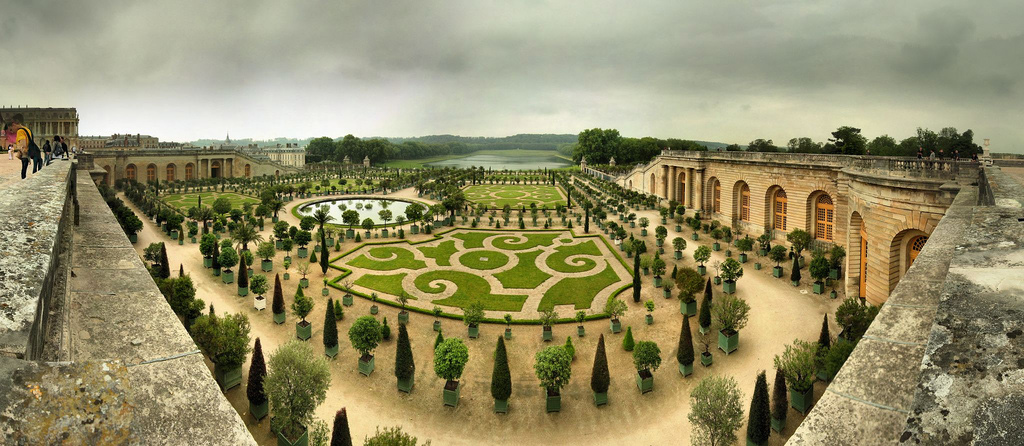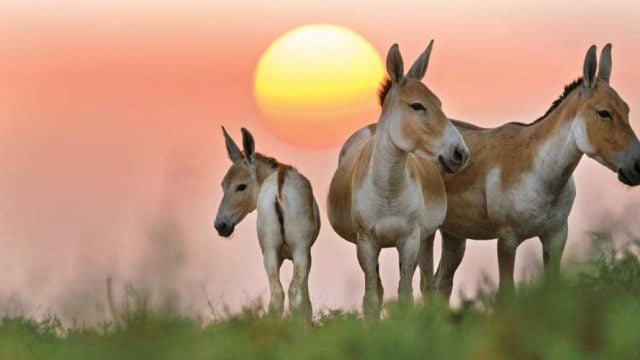Can France be described in a few words? A country whose literature, culture, food and wine, and
Located in Western Europe, France is surrounded by some of the major European countries, such as Germany, Spain, Italy, Belgium and Switzerland. A diverse landscape, splendid architecture, regional cuisine (including wine and cheese), and adventure sports are some of its key attractions.
In the south-east of the country lies the contrasting landscapes of the French Alps and the French Riviera. The south-western part is known for the beaches along the Atlantic Ocean. Explore the historic towns and vineyards (Loire Valley) of central France. If history of the world wars fascinate you, then you have to visit northern France, home to Normandy.
If you are on a self-guided tour, we recommend chalking out a well-researched itinerary to save time. For getting around, we recommend a mix of road and rail trips. Sometimes, a slow train is better as it allows you to enjoy the countryside.
Several French cities (Paris, Lyon, Marseille, Toulouse, Lille, Nice and Rennes, among others) have their own Métro or tram system, and every town has a reasonably extensive bus network.
Getting There
Indians need valid French visa to enter the country. France is a member of the Schengen Agreement. But since India is not a visa-exempt country, you have to complete additional border formalities if you are arriving from other Schengen countries. To apply for visa from India, you may contact the consular offices or visa application centres in Delhi, Mumbai, Bengaluru, Puducherry, Kolkata, Chandigarh, Jaipur, etc. For online forms, details of fees, procedures and biometric requirements, and submission of visa applications, refer to vfs-france.co.in/.
Air India, Jet Airways and Air France operate direct flights between India and France. There are direct flights between Paris and New Delhi, Mumbai and Bengaluru. Besides, you can avail other airlines and more than one stopover to build your itinerary. Skyscanner (skyscanner.co.in/) maintains a comprehensive list of flights by different airlines.
According to seasoned travellers, French school breaks during spring and winter, Easter and a few other holidays see a lot of local holiday crowd. Also, be prepared for crowded streets and traffic snarls during the July 14 Bastille Day.
What to See & Do
You are most likely to start with Paris, especially if you are a first time visitor. The cultural and couture capital of the world, Paris (parisinfo.com) is a city with many layers. The innumerable monuments and museums of the city located on the river Seine are the most obvious attractions. Some of the obligatory stops include the Eiffel Tower (toureiffel.paris/en/), Notre-Dame Cathedral, Arc de Triomphe, Musée d’Orsay, the Paris catacombs, Château de Versailles, a walk through Montmartre, exploring cafés and luxury shops along Champs-Élysées, taking the Batobus along the Seine River.

The Louvre (louvre.fr/en) requires multiple visits, if you have the time. Or, queue up for the most popular attractions, if it is your first visit. Most monuments have ticketed entry, and if you want to beat the queues, advance online purchase of tickets, will save a lot of time. The Paris Pass (parispass.com/) is a convenient option that allows fast track or free entry to museums, bus tours, etc. Paris Disneyland (disneylandparis.com) is celebrating its silver jubilee in 2017 with special offers, so if you’re planning to visit this year, do take note. In between the high voltage attractions, squeeze in a walking tour of the city, explore the smaller lanes and their cafes, like a trip to the Choco Story, a gourmet chocolate museum, or go for a family outing to Jardin du Luxembourg where kids can enjoy puppet shows, pony rides and delicious crepes. May be you can catch an opera or have dinner at a Michelin star restaurant to know what is French fine dining. Stopping by a bridge over the river or resting by a fountain with a book in hand can have a therapeutic effect when exhausted.

If you do not have time to explore the rest of France, at least try to squeeze in a trip to Strasbourg, where you will find culture and architecture that boasts of a gorgeous blend of German and French influences. Despite suffering the vagaries of of various wars, Strasbourg has managed to preserve its exceptionally varied heritage, showcasing its evolution from Roman times through to the present day.

The French Riviera (Côte d’Azur), located on the Mediterranean Sea, was once the favourite retreat of the elite. While it still carries an air of exclusivity, today it is an established beach destination, and rather crowded in summer. Famous cities here Nice and Cannes (of the film festival fame). If you are looking for some lesser known attractions, check out the perfumeries of Grasse or meet the glass blowers of Biot or the potters in Vallauris.

The French Alps is popular for its outdoor activities, including mountaineering, skiing, mountain biking, paragliding. Otherwise, enjoy some water sports activities in Lake Geneva, Lac d’Annecy or Lac de Bourget.
The Loire Valley, once known as the Garden of France, is today famous for its châteaux (castles), such as Châteaux Amboise, Château de Villandry, Azay-le-Rideau, etc. Explore France’s biggest area to be included in UNESCO’s world heritage list, on foot, by bicycle or on board a barge.

The Toulouse-Pyrénées region is for those who love life in the slower lane. Home of the Airbus company, Toulouse is the Pink City of France. It has several interesting museums built within historical monuments or on former industrial sites.
Normandy in northern France has a coastline marked by white-chalk cliffs and WWII beaches, including the Omaha Beach, site of the famous D-Day landing. The Mont-Saint-Michel remains a must-see with Europe’s highest high tides.
Brittany offers varied landscapes, including beaches, cliffs, and moorland, interspersed with medieval towns. The Seven Isles constitute the largest bird sanctuary on the French coastline, home to puffins, shags and gannets. Cap Fréhel also offers an ornithological ballet of give and take between the sea and the moors.

Despite their fantastic scenic beauty, the national parks of France seem to be the least talked about. Visit Vanoise National Park or the Parc national des Pyrénées to understand what we mean.
Offering unlimited travel on the French national rail network, the France Rail Pass (francerailpass.com/) enables travellers to go everywhere in France by train. It is valid from 3 to 9 days of travel within a month. Pass holders enjoy bonuses and discounted fares in many partner affiliates, including gastronomic restaurants, hotels, cabarets, museums, galleries and shops. The Eurail France Pass (raileurope.com)—with a flexi pass offering choice of 3, 4, 5 or 8 days within a one-month period—also allows you to travel extensively on the French national rail network.
Where to Eat & Drink
We will not offer you a full guide on where to eat and drink in Paris because browsing the innumerable cafes and restaurants of this culinary mecca, stopping for a nibble here or a meal there, is half the fun of visiting the city. We will just repeat what most experienced travellers recommend—cafes and restaurants in and around the typical tourist zones are often pricey while food and service fail to match the price charged; so check out the eateries tucked away in the less crowded neighbourhoods. You can also opt for a gourmet ride on a double-decker bus (bustronome.com) or a leisurely dinner cruise on the Seine (viator.com/Paris-tours/Dinner-Cruises/d479-g3-c5640). For an authentic French dining experience, you can sign up for a Dinner with French hosts at a Parisian home. Wine tasting at De Vinis Illustribus and champagne tasting at the Dilletantes are also highly recommended.
French cuisine uses meat liberally, so strict vegetarians may find it a little difficult. There are quite a few Indian restaurants (tripadvisor.in/Restaurants-g187147-c24-Paris_Ile_de_France.html) in Paris who offer vegetarian-friendly meals. Outside Paris, opt for vegan restaurants.
If you are in Strasbourg, a visit to the winstubs is a must. These essentially small wine bars serve home-cooked traditional dishes and traditional wines of the Alsace region. The city is also known for its breweries and microbreweries where you can enjoy beer tastings, beer-inspired cuisine and other such gastronomic joys.

Can any trip to France be complete without a visit to Champagne, whose hillsides, houses and cellars fall under Unesco Heritage tag? Thankfully, the famous brands and family-owned enterprises welcome visitors to their vineyards and cellars, where you can observe the strictly-regulated process of champagne production and may be taste some. Don’t miss the chance to sample the region’s local ham and creamy cheese.

Three hours by train from Paris, Bordeaux is also a gateway to some of France’s finest vineyards. It has over a hundred thousand hectares of vineyards and nearly 10,000 grape growers. Take the train to Saint Emilion, one of the world’s most famous vineyards, or opt for a guided tour (bordeaux-tourisme.com) in a vineyard to taste one of the famous vintage wines of Margaux, Pauillac or Saint-Julien. The nearby Arcachon Bay is famous for its delicious seafood and oysters.

Lyon earned the title of Capital of Gastronomy way back in the 19th century. Circled by poultry, wine, fruit and vegetable producing regions, Lyon developed a simple but eclectic cuisine. Drop in at the bouchons to sample traditional dishes such as sausage in brioche or andouillette tirée à la ficelle (traditional French sausage). In the morning, they sell mâchon, a meal mainly made up of charcuterie moistened in Beaujolais, a wine produced in the eponymous vineyard. It is not unusual to rub shoulders with Michelin starred chefs in Lyon’s indoor food market, Paul Bocuse.
Burgundy in east-central France is known for the Burgundy wines as well as Pinot Noirs and Chardonnays, Chablis and Beaujolais. The globally popular Dijon mustard takes its name from the region’s capital.
Refer to La Liste (laliste.com/) for a comprehensive list of top 1000 restaurants of France.
Where to Stay
You can choose from a host of accommodations, from regular hotels to hostels, B&Bs, holiday villages or resorts, furnished villas, apartments and studios, tourist residence or vacation rental, etc. For a comprehensive list of hotels and other accommodation, refer to france-hotel-guide.com/, https://en.gites-defrance.com/, https://in.hotels.com/, https://www.booking.com/ or https://www.airbnb.com. A good resource for detailed guides to various regions, cities, main attractions as well as information on events and festivals is us.france.fr/
Bordeaux
Brittany
Burgundy



